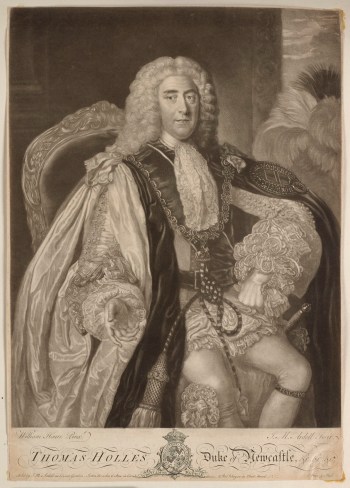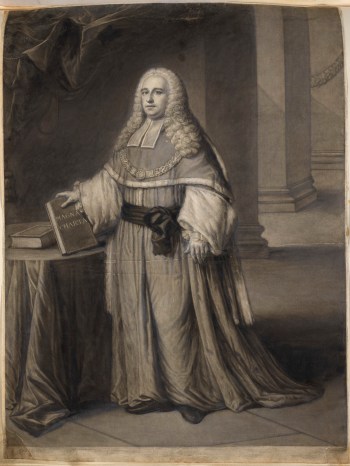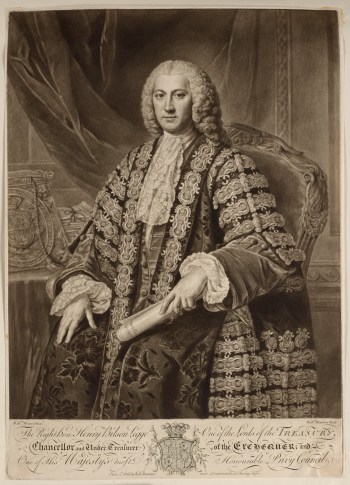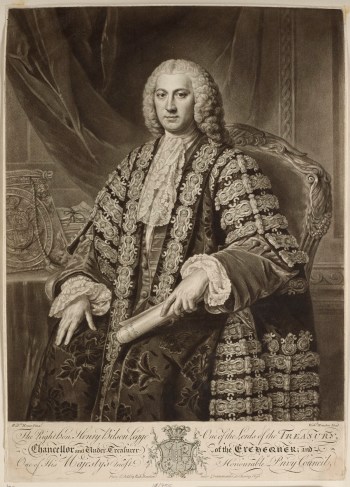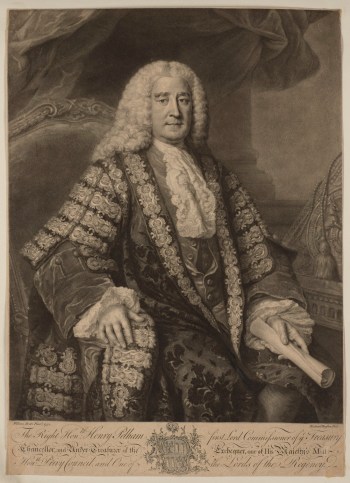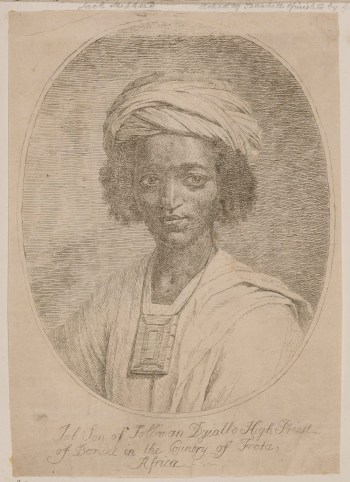William Hoare RA (c. 1707 - 1792)
RA Collection: People and Organisations
The portrait painter William Hoare grew up in Suffolk and Berkshire before moving to London to join the studio of Italian painter Giuseppe Grisoni (1699 – 1769). Hoare accompanied his master when he returned to Italy in 1728. He spent ten years working in the studio of the history painter Francesco Imperiali (1679 – 1740) in Rome, forming friendships with young British aristocrats on the Grand Tour who would later become his patrons.
Hoare returned to England in the late 1730s. Despite making a pastel portrait of Frederick, Prince of Wales (1707 – 1751), Hoare struggled to make a living in London and soon moved to Bath, where his brother Prince (d.1769) was a sculptor. There was high demand for portraits in Bath, and Hoare’s paintings were popular in fashionable society. He produced portraits of politicians who visited Bath such as William Pitt the Elder (1707 – 1778) and Henry Pelham (1694 – 1754). He also received commissions for buildings in Bath including the Mineral Water Hospital (now the Royal National Hospital for Rheumatic Diseases, which still holds a fine collection of Hoare’s works) and the Octagon Chapel.
Hoare remained in close contact with the London art world, and from 1761 exhibited with the Society of Artists, a key institution in promoting public interest in the arts. In 1769, despite initially declining to join, Hoare became a Founding Member of the Royal Academy after a personal request from King George III (1738 – 1820). He died in Bath in 1792.
Profile
Nominated Member
Born: c. 1707 in Eye
Died: 10 December 1792
Nationality: British
Elected RA: 11 December 1769
Gender: Male
Preferred media: Painting and Pastel
Works by William Hoare in the RA Collection
11 results
-
![William Hoare RA, Sir Isaac Newton]()
William Hoare RA
Sir Isaac Newton, 1734
-
![William Hoare RA, Sir Isaac Newton]()
William Hoare RA
Sir Isaac Newton, 1734
-
![William Hoare RA, Thomas Pelham-Holles, duke of Newcastle upon Tyne and first duke of Newcastle under Lyme]()
William Hoare RA
Thomas Pelham-Holles, duke of Newcastle upon Tyne and first duke of Newcastle under Lyme, 1765-92
-
![William Hoare RA, Charles Pratt, first earl Camden]()
William Hoare RA
Charles Pratt, first earl Camden, 1765-92
Mezzotint with corrections in pencil and chalk
-
![William Hoare RA, Henry Bilson Legge]()
William Hoare RA
Henry Bilson Legge, 1760-75
-
![William Hoare RA, Richard Grenville-Temple, second earl Temple]()
William Hoare RA
Richard Grenville-Temple, second earl Temple, 1760-75
-
![William Hoare RA, Henry Bilson Legge]()
William Hoare RA
Henry Bilson Legge, c.1754
-
![William Hoare RA, Henry Pelham]()
William Hoare RA
Henry Pelham
-
![William Hoare RA, Katherine Pelham, countess of Lincoln]()
William Hoare RA
Katherine Pelham, countess of Lincoln, c.1760
-
![William Hoare RA, Lady in Flowered Dress]()
William Hoare RA
Lady in Flowered Dress, 1736-75
-
![William Hoare RA, Portrait of Ayuba Suleiman Diallo]()
William Hoare RA
Portrait of Ayuba Suleiman Diallo, c.1733
Works after William Hoare in the RA Collection
1 results
Works associated with William Hoare in the RA Collection
1 results
Associated books
2 results
-
Picturæ Raphaelis Santij Urbinatis Ex Aula Et Conclavibus Palatij Vaticani Ad Publicum Terrarum Orbis Ornamentum In Aereas Tabulas Nunc Primum Omnes Deductæ Explicationibus Illustratæ Typisque Editæ Sub Auspicijs Ter Magnis Ac Felicissimis Innocentij XIII. P.O.M. Beatissime Pater ... Laurentius Philippus de Rossi - Romæ Ad Templum Stæ. Mariæ De pace Cum Privilegio Summi Pontificis, Et Sup. Perm.: [1722]
05/863
-
Les Peintures De Charles Le Brun Et D'Eustache Le Sueur Qui Sont Dans L'Hôtel Du Chastelet Cy Devant La Maison Du President Lambert Dessinées Par Bernard Picard Et Gravées Tant par lui que par differens Graveurs L'On Y A Joint Les Plans et les Elevations de cette belle Maison avec sa description et celle de tous les sujets qui sont representées dans les Tableaux. - A Paris: [1740]
03/2270
Associated archives
6 results
-
Memoir of Ozias Humphry, cont'd
[c.1802]
Item HU/1/35
-
William Hoare Jr., Bath, to Jemmy [James Northcote], Clifford Street, London
30 Jul [1781]
Item AND/4/25
-
Off-print: brief biography of William Hoare
[c.1830]
Item AND/2/105
-
Off-print, a brief biography and small portrait of William Hoare
[c.1820]
Item AND/1/143


